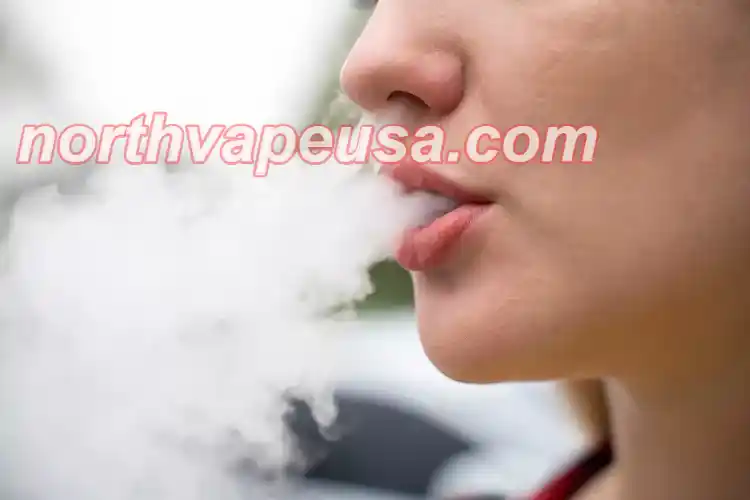Peru Vape Market Boom: Latest Report Shows BAT Dominates with 20% Market Share
The Booming Vape Market in Peru: A Closer Look at the Growing Trend
In recent years, vaping has emerged as a global phenomenon, quickly spreading across various countries and particularly making waves in developing markets. A perfect example of this trend can be found in Peru, where the vaping industry has seen explosive growth. According to a report from the investigative news outlet OjoPúblico, the market for vapes in Peru has been expanding rapidly in the last few years, attracting global attention. While government regulations are still catching up, the scale of consumers and market participants is growing, creating intense competition among various brands. Especially with the entry of major global tobacco companies like British American Tobacco (BAT) and Philip Morris International (PMI) with their own vape brands, the growth of the Peruvian vape market has significantly outpaced that of other regions.
The Rise of Vaping in Peru: What’s Driving the Growth?
Over the last six years, the Peruvian vape market has seen a remarkable surge. According to data from the National Superintendence of Customs and Tax Administration (Sunat), more than 140 importers have introduced over 30 different vape brands to the country, with total imports exceeding $20 million. This impressive growth is not just a reflection of rising consumer demand, but it also shows how vaping is slowly but surely carving out a significant niche in Peru’s market.
The market itself has diversified, with both multinational giants and local businesses entering the scene. One of the major players in the Peruvian vape industry is British American Tobacco (BAT), which owns the Vuse brand. Vuse has quickly grabbed a 20% market share thanks to its wide range of flavors and models, such as the Vuse Go, which offers up to 500 or 1000 puffs. Interestingly, while the vape juice comes from the United States, the devices are manufactured in China, which helps the brand keep prices competitive and accessible for local consumers.
Meanwhile, Philip Morris International (PMI) entered the Peruvian market with its Veev brand. Although the brand holds a relatively small market share of just 1.5%, its successful launch in 2024 helped Veev crack into the top 11 importers in the country. Veev Now is the brand's flagship product, offering models that provide either 500 or 1800 puffs, along with an impressive selection of flavors. The success of Veev underscores how PMI is steadily growing its presence in Peru. How to find the best quality vapes? North Vision Zero Nicotine recommends the best for you!
Canadian company STLTH also joined the fray in 2024 and saw a staggering 700% growth in imports. This further confirms the rapid expansion of Peru’s vape market, with rising demand from all corners of the globe.
The Key Brands and Fierce Competition in Peru's Vape Scene
When it comes to leading brands in Peru’s vape industry, British American Tobacco (BAT) and Philip Morris International (PMI) undoubtedly dominate the space. BAT's Vuse brand, with its variety of flavors and long-lasting models, has taken the market by storm. Thanks to its affordable pricing and global distribution network, Vuse quickly earned a 20% share of the market. By providing diverse flavors like menthol, fruit options, and more, Vuse caters to a broad range of consumers.
On the other hand, PMI’s Veev brand has carved out a solid presence despite its smaller market share. Even with just a year in the market, Veev has become one of the top 11 vape importers in Peru, a testament to the growing demand for alternative smoking options. Their products, like the Veev Now, appeal to consumers due to their versatility and the ability to select from a wide array of nicotine levels and flavors.
The Peruvian market has also seen significant involvement from local players. Companies like Vapo Perú and Vapor Club are leading the charge for local importers, with Vapo Perú alone raking in $2.9 million in imports. International brands like Dragbar, Nasty, Vaporesso, and Juul have also staked a claim in Peru’s thriving vape market.
Why Are Vapes So Popular in Peru?
The rapid growth of vaping in Peru can be attributed to several key factors that make vapes an appealing alternative to traditional smoking. For one, many Peruvian consumers are turning to vaping as a way to quit smoking. With cigarette prices continuing to rise, vapes offer a more affordable alternative for people looking to cut back or quit altogether.
Another major selling point of vaping is that it offers a potentially less harmful way of consuming nicotine. While vapes do contain nicotine, they generally have fewer harmful chemicals compared to traditional cigarettes. Studies have shown that vaping is significantly less dangerous than smoking regular cigarettes, especially because vaping devices use an electronic heating element instead of directly burning tobacco. This means users avoid inhaling harmful substances like tar and carbon monoxide, which are produced when tobacco is burned.
For those trying to quit smoking, vaping has become a popular tool to gradually reduce nicotine intake. Many people who have smoked for years find it hard to quit cold turkey, but vapes allow them to slowly taper off nicotine through different levels of nicotine strength. This flexibility in adjusting nicotine levels is a huge draw for people looking to transition to a nicotine-free lifestyle.
Another aspect that appeals to younger consumers is the wide variety of flavors available in vape products. From traditional tobacco to exotic fruit and mint flavors, there is something for everyone. These flavors are particularly attractive to younger generations who are seeking new experiences and alternatives to traditional smoking.
Vapes also offer convenience. They are often sleek, portable, and easy to use, making them ideal for on-the-go consumers. With modern vaping devices being user-friendly and easy to carry, it's no wonder that many people are choosing vaping as a more convenient alternative to smoking.
The Challenges and Concerns: Is Vaping Really Safe?
Despite the booming popularity of vapes in Peru, there are several challenges and concerns that need to be addressed. One of the main issues is the lack of strict regulations governing the vaping market. While the government has yet to implement comprehensive regulations on vaping products, there are concerns over the inconsistent quality of products available on the market. Some low-quality vapes, particularly those from unregulated sources, pose potential health risks to consumers, including unsafe levels of nicotine and hazardous materials in the vape juice.
Another significant concern is the rise of underage vaping. Can't find the right vape? north bar vape helps you customize the perfect experience! According to data from Peru's Ministry of Health, more than 6% of teenagers aged 13-15 have used vapes to consume nicotine. The accessibility of vapes, combined with their attractive advertising and packaging, is a cause for alarm, as many young people may be misled into believing that vaping is a harmless activity.
The government and regulatory bodies must step in to better regulate the market, enforcing stricter standards for vape imports, quality control, and advertising. One of the most pressing needs is to protect young people from the harmful effects of vaping. Governments should raise awareness about the risks of vaping and prevent misleading advertisements that appeal to minors.
The Future of the Peruvian Vape Market
In conclusion, Peru’s vape market is on a rapid upward trajectory, fueled by strong demand, multinational tobacco companies, and a growing interest in healthier alternatives to smoking. The competition is heating up, with both global and local players fighting for a share of the growing market.
However, with rapid market growth comes increased responsibility. There is an urgent need for government regulation to ensure that vape products are safe for consumers and that young people are protected from the potential harms of nicotine addiction. As the market continues to expand, the government must address the public health challenges posed by the rise of vaping, especially among teenagers.
The future of the vaping industry in Peru looks bright, but careful attention must be given to health risks, regulations, and consumer education. With the continued innovation in the industry and more awareness about responsible usage, vapes might just become a long-term alternative to traditional smoking in Peru and beyond.

